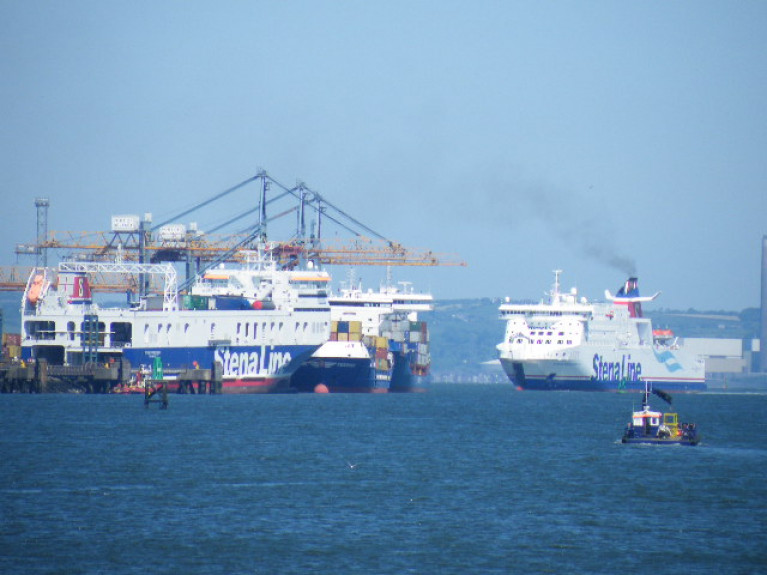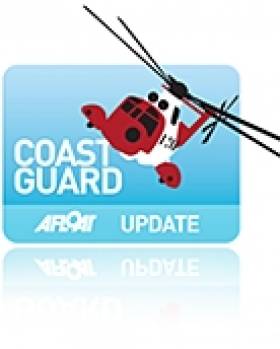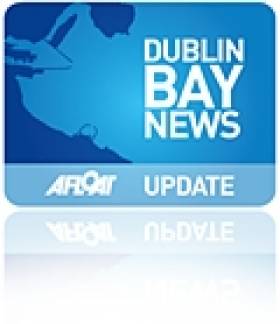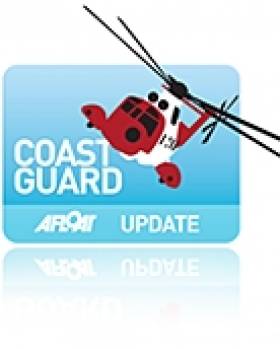Displaying items by tag: Varadkar
Varadkar Says Ireland Expects the UK to Extend Brexit Grace Periods
According to RTE News, the Tánaiste has said Ireland expects Britain to announce further extensions to post-Brexit grace periods on goods imports into both Northern Ireland and into the rest of the United Kingdom.
Leo Varadkar said: "The expectation is that the United Kingdom will announce a further extension of the grace periods, not just in relation toNorthern Ireland but also imports from the EU and Ireland into the UK."
He was speaking following a meeting in London with Britain's cabinet office minister Michael Gove, who he said had told him that Britain "doesn't want to walk away from the protocol but does want to make it more workable."
Last week, Mr Varadkar said he would not object to grace periods delaying checks on some goods entering Northern Ireland being extended beyond the end of this month as part of efforts to resolve the dispute over the Northern Ireland Protocol.
More from the story here.
Calls for Sea Change in Attitudes to Maritime Safety
#seasafety – Minister for Transport, Tourism & Sport Leo Varadkar has called for a sea change in attitudes to maritime safety, as he launched a new consultation process on maritime safety: Sea Change – Building a new Maritime Safety Culture. But even as the Minister was preparing for today's event Howth Cooast Guard was bringing to safety two children recovered from a small dinghy off North Co Dublin on Monday evening.
Minister Varadkar highlighted the 134 maritime fatalities which have occurred since 2002, almost half of which were as a result of leisure activities on recreational craft. As Afloat.ie reported earlier the Minister was speaking at the launch of the consultation process in the Department of Transport, Tourism & Sport which included stakeholders from shipping, fishing, leisure, passenger operators, maritime safety and many other sectors.
Minister Varadkar said: "We all need to take a fresh look at how we use the waters in and around our island, and build a culture of maritime safety in our communities. This requires a radical change of culture in our attitude to safety."
"The sea and any open water can be hostile and dangerous environments and demand total respect. By consulting with stakeholders and the general public, we want to reach a situation where there are no fatalities."
The results of the consultation process will feed into the first ever Maritime Safety Strategy for Ireland. This Strategy is being prepared by the Department of Transport, Tourism & Sport. This approach borrows from the very successful road safety strategies that have helped make Ireland's roads considerably safer over the last 15 years.
The goal is to reduce the number of deaths and injuries which occur every year on craft in our coastal and inland waters. This will be done by building a culture of safety in the maritime sector, for all types of craft, with a focus on maritime safety issues, and by posing key questions to shape the new Maritime Safety Strategy.
Sea Change looks at how to address the top ten factors contributing to loss of life at sea in Ireland:
Lack of an adequate maritime safety culture;
Unsuitable or inadequately maintained safety equipment on board, or lack thereof;
Lack of crew training;
Failure to plan journeys safely, including failure to take sea/weather conditions into account;
Non-wearing of personal flotation device (PFD);
Vessel unseaworthy, unstable and/or overloaded;
Inadequate enforcement of regulations;
Impairment due to fatigue or the influence of alcohol and/or drugs;
Inadequate crewing levels/solo operation;
Unsuitable clothing being worn on board.
Minister Varadkar said: "The number of tragedies around our coastline, and the effect of those events on families, has put the need for a new Maritime Safety Strategy into sharp focus. We have to learn from past tragedies, in memory of those who have lost their lives, and safeguard future generations. There is a lot of goodwill towards improving safety at sea, but we need to harness that goodwill."
"I urge all stakeholders, and the general public, to engage with this consultation process and to contribute their ideas to the Irish Maritime Administration in my Department as we strive to improve maritime safety together. My hope is that a wide range of responses will be received, and that positive ideas will emerge which will enable us to take further practical measures to save lives in the maritime sector, since any life lost is one too many."
The consultation period runs until 29th August 2014, and the new Strategy will be published later this year. The Strategy will be monitored closely during implementation and reviewed and updated within a five year period.
There have been a total of 134 fatalities in the Maritime Sector since 2002:
Leisure activities:
66 fatalities (49% of total)
Youngest fatality (15yrs)
Oldest fatality (71yrs)
Fishing Sector:
51 fatalities (38% of total)
Youngest fatality (21yrs)
Oldest fatality (70yrs)
Passenger Sector:
11 fatalities (8% of total)
Youngest fatality (14yrs)
Oldest fatality (73yrs)
Cargo Sector:
6 fatalities (5% of total)
Youngest fatality (20yrs)
Oldest fatality (55yrs)
The Irish Maritime Administration
The Irish Maritime Administration (IMA) was established in 2013 to integrate the planning and delivery of all the maritime services of the Department under a single national office. It is central to the Department's drive for more efficient and effective delivery of maritime services.
It comprises the Maritime Safety Policy Division, the Marine Survey Office, the Irish Coast Guard, the Maritime Transport Division and a new Maritime Services Division.
The IMA is developing the maritime transport sector by facilitating the achievement of international safety levels and by enhancing infrastructure needed to secure employment in the shipping, fishing and leisure sectors.
S92 Search & Rescue Helicopter Launched in Dublin
#coastguard – Minister for Transport, Tourism & Sport Leo Varadkar officially launched the Coast Guard's new state-of-the-art S92 search & rescue helicopter for the Dublin region in Weston Airport today.
This is the fourth and final Sikorsky S92 helicopters to come into operation for the Coast Guard and means the entire fleet has now been upgraded. It replaces the Sikorsky S61 which was in use until recently at Coast Guard bases in Dublin, Shannon, Sligo and Waterford.
Speaking at the launch Minister Varadkar said: "This new helicopter means the Irish Coast Guard now has one of the most modern and effective helicopter fleets in the world. The S92 is tailored specially for search & rescue operations. It has an extended range of 270 nautical miles, is faster and safer, can carry more casualties, and can fly at higher altitude and in much worse weather.
"I'm delighted that the entire Coast Guard helicopter fleet has now been upgraded. It comes after one of the busiest years ever for the Coast Guard which responded to 2,627 incidents involving fishing craft, leisure vessels and mountaineers. A well-equipped and well-resourced Coast Guard can represent the difference between life and death for anyone in trouble at sea or on land.
"The new helicopters also allowed the Coast Guard to expand its role in providing emergency medical transport for the HSE. Last year the Coast Guard performed 253 aeromedical missions and 159 offshore island medical evacuations.
"This is a good occasion to pay tribute to the dedicated helicopter crews who work tirelessly to rescue lives all year round, and also the hundreds of volunteers on Coast Guard and RNLI vessels, mountain and cave rescue teams. It wouldn't be possible to provide the same level of emergency response without these volunteers. That's also why we have the highest ever allocation of €67.9 million for the Coast Guard in 2014 to finance the provision of critical search & rescue services."
Coast Guard Director Chris Reynolds said: "This has been an exceptional year in terms of the number of incidents, but there has been significant progress in terms of modernising and further developing the Coast Guard. The new helicopter fleet will greatly enhance our capacity to provide a first-class response to all emergencies in the year ahead, whether off-shore and inland."
The Coast Guard also announced a competition to name all four of the new helicopters. The nationwide competition will kick off next week and will be featured on Clare FM, Ocean FM, FM104, Q102 and WLR, including their Facebook sites. Listeners will be invited to send in their suggestions to these radio stations. The aim is to raise awareness locally of the new Coast Guard helicopters, and to inform people about how best to alert the Coast Guard or other emergency services in the event of an incident.
Enhanced medical capacity of Sikorsky S92
The S92 and its well-trained crews including State-registered paramedics can now provide a first class medical service in emergencies and for medical transfers.
Inter-hospital transfers, donor organ recipient transfers, specialist medical teams can now be transported in this modern, reliable and safe aircraft which with its large multi role cabin and rear access ramp which can accommodate stretchers, hospital trolleys, incubators, equipment and personnel .
It can also transfer specialised Ambulance Response and Mountain Rescue teams to an incident anywhere in the country at very short notice, for example train or bus crash or RTA (road traffic accident) requiring multi casualty evacuation.
The Coast Guard has surveyed over 50 landing sites countrywide but has focused mainly on needs in areas where road transport may not benefit the patient if urgent transport was required, especially in terms of transferring people to a centre of excellence within the 90 minute window which is the requirement in the majority of cases when a casualty needs immediate medical attention at a nominated medical centre as directed by HSE staff.
The area of operation in the Irish EEZ (Economic Exclusion Zone) will also be expanded to nearly 300 miles offshore and using the S92's satellite communications, long-range and discreet communications suite, which means that casualty information can be transmitted to the receiving hospital.
Technical information on Sikorsky S92
The capability to be on-scene to a maritime incident in any weather conditions in a shorter time period is largely enhanced due in the main to four main attributes of the aircraft:
Speed: Up to 150kts and doesn't lose speed at altitude, will carry 22 casualties at max range with twin engines each delivering 2500 SHP.
Range: Will have an ROA of 270mls from Waterford and can enhance that with auxiliary tanks.
De-icing: In adverse weather where rotor icing is an issue this aircraft can fly at 10.00ft in conditions of minus 40dgs C.
Performance: Modern reliable engines which deliver more power coupled with three programme linked navigational software , searchlight capability of 30 million candle power , dual high speed winches, high resolution picture zoom, memory mapping, adjacent aircraft detection capability, hi-tech communication systems, large multi role cabin, HEMS licenced, 8 passenger seats, reliable single engine performance, enhanced hover performance and in-flight homing equipment.
The Department of Transport and Coast Guard are members of the Marine Safety Working Group which promotes the importance of water safety for professional and leisure users.
Initiatives launched in 2013 included:
• Slipway signage advising people to use a Personal Flotation Device (lifejacket).
• Launch of new safetyonthewater.ie website
• New Poster Campaign promoting the use of Personal Flotation Devices and communication/alerts devices.
• Promotion of Water Safety on RTE's Search & Rescue show and a new Coast Guard water safety advertisement for TV.
• Wristband IDs for children using the beach or other recreational facilities.
The Marine Safety Working Group comprises:
Irish Coast Guard (IRCG),
Irish Maritime Administration of the Department of Transport, Tourism & Sport,
Irish Water Safety,
Waterways Ireland,
Health and Safety Authority,
Royal Lifeboat Institution,
Bord Iascaigh Mhara
Met Eireann
Irish Sailing Association(ISA).
Seven New Coast Guard Boats in €2M Safety Programme
€1.5 million has been allocated for 7 new Coast Guard boats as part of its boat renewal programme;
€300,000 will be used to purchase new vans for the Coast Guard's volunteer rescue teams;
€200,000 will be used to update the Coast Guard's pollution response equipment to best international standards.
Separately, Minister Varadkar is backing an Irish Coast Guard initiative to have a new European Coast Guard Secretariat based full-time in Dublin.
Speaking today, Minister Varadkar said: 'I'm very happy to allocate extra resources to the Coast Guard to upgrade its vital equipment, including seven new boats, along with replacement vans and pollution control materials. One of the new Rigid Inflatable Boats (RIBs) has been allocated to Achill Coast Guard, and the remainder will be allocated to Coast Guard Stations around Ireland over the next 12 months, according to priority.
"Everyone who goes to sea owes a debt of gratitude to the Coast Guard, as do their family and friends. The Coast Guard responds to emergency call-outs, and saves lives, at all hours of the day and night, throughout the year. Much of the Coast Guard's work is only possible through the large network of individual and group volunteers."
Minister Varadkar also congratulated the Director of the Irish Coast Guards, Chris Reynolds, who has been elected the new Chair of the European Union Heads of Coast Guard. The annual Heads of Coast Guards of Europe's meeting will now take place in Dublin next August.
Mr Reynolds has been asked specifically to prepare the ground for a permanent Secretariat, manned by Coast Guard Officers from Member States, the EU Commission and various agencies. The Secretariat will meet in Dublin for its inaugural year, and Mr Reynolds will propose to have the Secretariat based in Dublin on a permanent basis.
Additional info:
New Delta 900 SUPER X RIBs for Irish Coastguard
The Irish Coastguard's new Delta 900 SUPER X Coast Guard RIBs are 9.00m overall and will be in service off the Republic of Ireland's coast.Jun 07, 2011 - From its early days in 1979, the Delta Power Group (builder of Delta RIBs) has grown to become one of the most successful and highly regarded designers and builders of commercial RIBs for the world market.
This enviable position has been achieved through a simple business philosophy. Delta has not burdened itself with debt to fuel growth, preferring to expand organically by concentrating on contracts that remain strictly within its targeted commercial sector, winning business from successful organisations; which in turn generates repeat orders and new contacts.
A recent Irish Coastguard contract is not for just one craft; but covers a five year programme to supply 12 highly specified boats. Delta's Military and Law Enforcement range comprises nine models and these are offered with different specifications depending on usage.
The Irish Coastguard's new Delta 900 SUPER X Coast Guard RIBs are 9.00m overall and will be in service off the Republic of Ireland's coast. Twin Yamaha F225B engines give a maximum speed of 40 knots and a cruising speed of 32 knots. Safety equipment is to MSO P6 Passenger Boat and other equipment is to MCA Category 3 rating. The extensive specification includes Shockwave mitigating seating for all the crew. And it also features Delta's standard procedure of terminating all wiring looms in fully waterproof housings with Deutsch connectors to ensure maximum in service reliability; essential, since the Irish Sea and Atlantic Ocean can throw up very demanding operational conditions.
In addition, Delta is one of the few major Commercial RIB builders to run the processes of laminating, tube making and outfitting completely 'in house' (on its wholly owned and secure 2.2 Acre freehold site) in 79,000 sq.ft of covered space. This ensures maximum Management and Quality Control. Delta is certified to ISO 9001: 2008 and is able to build under full survey of all the major Classification Societies.
As a result, Delta's extensive international client base now includes ERRV, Marine Police, Border Control, Customs & Excise, Navies, Special Forces, Coastguards, Search & Rescue services, Law enforcement agencies, Military and Port Authorities; to name just a few.
Ex Sailing Chief Lashes 'Grandiose' Dun Laoghaire Harbour Plan
A former Irish Sailing Chief has added his voice to the growing concerns of sailors in Dun Laoghaire to a recently published Harbour Masterplan that Waterfront Yacht Clubs say threatens sailing in the port, Ireland's biggest sailing centre.
The plans, along with the loss of the winter ferry service from the port were featured on RTE News this week.
The Harbour company, who published the designs last month, say the masterplan can create 'a thousand jobs' but a former Irish Sailing Association (ISA) President, Roger Bannon has blasted both the plan and a supporting promotional video (below) as 'grandiose nonsense'.
"The Masterplan will position Dun Laoghaire Harbour as a marine, leisure and tourism destination of international calibre", says Gerry Dunne, Chief Executive Officer, Dun Laoghaire Harbour Company.
"We need to spend an average of €5m a year on maintaining and developing the Harbour infrastructure. The Masterplan will involve investment of more than €230m, over the next 10-15 years and will result in 1000 sustainable jobs in areas such as tourism, marine service companies, select retail, and food and beverage." says the CEO.
But Bannon, a Dun Laoghaire sailing champion, says a plan is needed but the focus instead should be on something a lot more realistic.
"Sure we want a development plan for Dun laoghaire and its Harbour but let's look at something realistic and practical over a 10 year period which we know will work and stay away from this impossible grandiose nonsense.
Mr Leo Varadkar, T.D., Minister for Transport, Tourism and Sport visited the Harbour Board in June to view the Masterplan model and the plans.
During the visit the Minister said he was aware of the very keen local interest in the future development of the harbour. The yacht clubs, who occupy 50% of the harbour waterfront, say the future of the harbour is in marine lesiure.
Bannon's full comments are below:
"What a load of aspirational twaddle. High on sweeping statements and low on specifics. Sounds more like a plan to occupy people in highly paid jobs while nothing will ever happen.
Sure we want a development plan for Dun laoghaire and its Harbour but let's look at something realistic and practical over a 10 year period which we know will work and stay away from this impossible grandiose nonsense.
There are plenty of examples of cost effective developments in many cities around the world, such as Vancouver and Boston, where marine facilities and other resources similar to Dun laogahire have been brilliantly exploited for the general benefit of everyone.
Heaven forbid that our public servants might learn something from others facing the same dilemma elsewhere in the world. Should someone tell the Harbour Board that counting on residential development to generate funding may not work?
Finally, I do not understand how the Harbour Board can take it upon itself to come up with such a plan without integration with local planning for the whole of Dun Laoghaire. Was the video made by DreamWorks?"
Speaking today, Minister for Transport Leo Varadkar TD said: This invitation to Achill Coast Guard Unit is an acknowledgement of the life-saving work that this Unit (and indeed all our Volunteer Units) around the country are engaged in every day of the year. Every day, these people selflessly risk their own lives to save others in all weathers, day and night, often in very dangerous conditions. This invitation is in recognition of their work and is an indication of the high esteem in which our Coast Guard Units are held internationally."
Achill Island Coast Guard Unit is made up of 24 volunteers who carry pagers and are available on 15 minutes' notice day and night 365 days a year. In August 2009 the Unit took part in a search and rescue operation for a person who fell into the Atlantic Ocean while fishing off the rocks near Achill Island. In response to this incident, the Achill Coast Guard rescue boat was launched together with local RNLI Ballyglass Unit and the Sligo Coast Guard helicopter during very hazardous weather conditions. The casualty (a Mr. Patrick Williamson) who amazingly stayed afloat swimming in high seas for over an hour was successfully rescued and spent 5 days in intensive care following his ordeal in the sea.
On making a full recovery, Mr. Williamson nominated Achill Island Coast Guard Unit for a National Courage Award. Previous recipients of this honour include the Irish Army (for peacekeeping duties) and former Taoiseach Mr. Bertie Ahern (for his involvement in the peace talks in Northern Ireland).
Director of the Irish Coast Guard, Mr. Chris Reynolds today said: "The Achill Coast Guard Unit is well-deserving of this honour and I congratulate them on being part of this special event. It is a great recognition of the standard and quality of service the Coast Guard provide and I thank Mr. Williamson along with all who helped make this happen for inviting them to take part in this special event."


































































